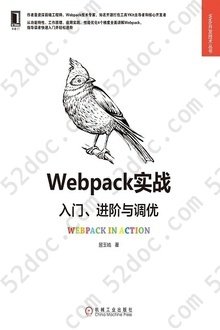注重体验与质量的电子书资源下载网站
分类于: 云计算&大数据 其它
简介

编译原理: (英文版·第2版) 豆 9.1分
资源最后更新于 2020-07-20 12:17:25
作者:Alfred V. Aho
出版社:机械工业出版社
出版日期:2011-01
ISBN:9787111326748
文件格式: pdf
标签: 编译原理 计算机 计算机科学 Compiler 编程 经典 紫龙书 編程語言
简介· · · · · ·
本书是编译领域无可替代的经典著作,被广大计算机专业人士誉为“龙书”。本书上一版自1986年出版以来,被世界各地的著名高等院校和研究机构(包括美国哥伦比亚大学、斯坦福大学、哈佛大学、普林斯顿大学、贝尔实验室)作为本科生和研究生的编译原理课程的教材。该书对我国高等计算机教育领域也产生了重大影响。 第2版对每一章都进行了全面的修订,以反映自上一版出版20多年来软件工程。程序设计语言和计算机体系结构方面的发展对编译技术的影响。本书全面介绍了编译器的设计,并强调编译技术在软件设计和开发中的广泛应用。每章中都包含大量的习题和丰富的参考文献。 本书适合作为高等院校计算机专业本科生和研究生的编译原理与技术课程的教材,也可供广大计算机技术人员参考。
目录
1 introduction
1.1 language processors
1.2 the structure of a compiler
1.3 the evolution of programming languages
1.4 the science of building a compiler
1.5 applications of compiler technology
1.6 programming language basics
1.7 summary of chapter 1
1.8 references for chapter 1
2 a simple syntax-directed translator
2.1 introduction
2.2 syntax definition
2.3 syntax-directed translation
2.4 parsing
2.5 a translator for simple expressions
2.6 lexical analysis
2.7 symbol tables
2.8 intermediate code generation
2.9 summary of chapter 2
3 lexical analysis
3.1 the role of the lexical analyzer
3.2 input buffering
3.3 specification of tokens
3.4 recognition of tokens
3.5 the lexical-analyzer generator lex
3.6 finite automata
3.7 from regular expressions to automata
3.8 design of a lexical-analyzer generator
3.9 optimization of dfa-based pattern matchers
3.10 summary of chapter 3
3.11 references for chapter 3
4 syntax analysis
4.1 introduction
4.2 context-free grammars
4.3 writing a grammar
4.4 top-down parsing
4.5 bottom-up parsing
4.6 introduction to lr parsing: simple lr
4.7 more powerful lr parsers
4.8 using ambiguous grammars
4.9 parser generators
4.10 summary of chapter 4
4.11 references for chapter 4
5 syntax-directed translation
5.1 syntax-directed definitions
5.2 evaluation orders for sdd's
5.3 applications of syntax-directed translation
5.4 syntax-directed translation schemes
5.5 hnplementing l-attributed sdd's
5.6 summary of chapter 5
5.7 references for chapter 5
6 intermediate-code generation
6.1 variants of syntax trees
6.2 three-address code
6.3 types and declarations
6.4 translation of expressions
6.5 type checking
6.6 control flow
6.7 backpatching
6.8 switch-statements
6.9 intermediate code for procedures
6.10 summary of chapter 6
6.11 references for chapter 6
7 run-time environments
7.1 storage organization
7.2 stack allocation of space
7.3 access to nonlocal data on the stack
7.4 heap management
7.5 introduction to garbage collection
7.6 introduction to trace-based collection
7.7 short-pause garbage collection
7.8 advanced topics in garbage collection
7.9 summary of chapter 7
7.10 references for chapter 7
8 code generation
8.1 issues m the design of a code generator
8.2 the target language
8.3 addresses in the target code
8.4 basic blocks and flow graphs
8.5 optimization of basic blocks
8.6 a simple code generator
8.7 peephole optimization
8.8 register allocation and assignment
8.9 instruction selection by tree rewriting
8.10 optimal code generation for expressions
8.11 dynamic programming code-generation
8.12 summary of chapter 8
8.13 references for chapter 8
9 machine-independent optimizations
9.1 the principal sources of optimization
9.2 introduction to data-flow analysis
9.3 foundations of data-flow analysis
9.4 constant propagation
9.5 partial-redundancy elimination
9.6 loops in flow graphs
9.7 region-based analysis
9.8 symbolic analysis
9.9 summary of chapter 9
9.10 references for chapter 9
10 instruction-level parallelism
10.1 processor architectures
10.2 code-scheduling constraints
10.3 basic-block scheduling
10.4 global code scheduling
10.5 software pipelining
10.6 summary of chapter 10
10.7 references for chapter 10
11 optimizing for parallelism and locality
11.1 basic concepts
11.2 matrix multiply: an in-depth example
11.3 iteration spaces
11.4 aftlne array indexes
11.5 data reuse
11.6 array data-dependence analysis
11.7 finding synchronization-free parallelism
11.8 synchronization between parallel loops
11.9 pipelining
11.10 locality optimizations
11.11 other uses of affine transforms
11.12 summarv of chapter 11
11.13 references for chapter 11
12 interprocedural analysis
12.1 basic concepts
12.2 why interprocedural analysis?
12.3 a logical representation of data flow
12.4 a simple pointer-analysis algorithm
12.5 context-insensitive interprocedural analysis
12.6 context-sensitive pointer analysis
12.7 datalog implementation by bdd's
12.8 summary of chapter 12
12.9 references for chapter 12
a a complete front end
a.1 the source language
a.2 main
a.3 lexical analyzer
a.4 symbol tables and types
a.5 intermediate code for expressions
a.6 jumping code for boolean expressions
a.7 intermediate code for statements
a.8 parser
a.9 creating the front end
b finding linearly independent solutions
index
1.1 language processors
1.2 the structure of a compiler
1.3 the evolution of programming languages
1.4 the science of building a compiler
1.5 applications of compiler technology
1.6 programming language basics
1.7 summary of chapter 1
1.8 references for chapter 1
2 a simple syntax-directed translator
2.1 introduction
2.2 syntax definition
2.3 syntax-directed translation
2.4 parsing
2.5 a translator for simple expressions
2.6 lexical analysis
2.7 symbol tables
2.8 intermediate code generation
2.9 summary of chapter 2
3 lexical analysis
3.1 the role of the lexical analyzer
3.2 input buffering
3.3 specification of tokens
3.4 recognition of tokens
3.5 the lexical-analyzer generator lex
3.6 finite automata
3.7 from regular expressions to automata
3.8 design of a lexical-analyzer generator
3.9 optimization of dfa-based pattern matchers
3.10 summary of chapter 3
3.11 references for chapter 3
4 syntax analysis
4.1 introduction
4.2 context-free grammars
4.3 writing a grammar
4.4 top-down parsing
4.5 bottom-up parsing
4.6 introduction to lr parsing: simple lr
4.7 more powerful lr parsers
4.8 using ambiguous grammars
4.9 parser generators
4.10 summary of chapter 4
4.11 references for chapter 4
5 syntax-directed translation
5.1 syntax-directed definitions
5.2 evaluation orders for sdd's
5.3 applications of syntax-directed translation
5.4 syntax-directed translation schemes
5.5 hnplementing l-attributed sdd's
5.6 summary of chapter 5
5.7 references for chapter 5
6 intermediate-code generation
6.1 variants of syntax trees
6.2 three-address code
6.3 types and declarations
6.4 translation of expressions
6.5 type checking
6.6 control flow
6.7 backpatching
6.8 switch-statements
6.9 intermediate code for procedures
6.10 summary of chapter 6
6.11 references for chapter 6
7 run-time environments
7.1 storage organization
7.2 stack allocation of space
7.3 access to nonlocal data on the stack
7.4 heap management
7.5 introduction to garbage collection
7.6 introduction to trace-based collection
7.7 short-pause garbage collection
7.8 advanced topics in garbage collection
7.9 summary of chapter 7
7.10 references for chapter 7
8 code generation
8.1 issues m the design of a code generator
8.2 the target language
8.3 addresses in the target code
8.4 basic blocks and flow graphs
8.5 optimization of basic blocks
8.6 a simple code generator
8.7 peephole optimization
8.8 register allocation and assignment
8.9 instruction selection by tree rewriting
8.10 optimal code generation for expressions
8.11 dynamic programming code-generation
8.12 summary of chapter 8
8.13 references for chapter 8
9 machine-independent optimizations
9.1 the principal sources of optimization
9.2 introduction to data-flow analysis
9.3 foundations of data-flow analysis
9.4 constant propagation
9.5 partial-redundancy elimination
9.6 loops in flow graphs
9.7 region-based analysis
9.8 symbolic analysis
9.9 summary of chapter 9
9.10 references for chapter 9
10 instruction-level parallelism
10.1 processor architectures
10.2 code-scheduling constraints
10.3 basic-block scheduling
10.4 global code scheduling
10.5 software pipelining
10.6 summary of chapter 10
10.7 references for chapter 10
11 optimizing for parallelism and locality
11.1 basic concepts
11.2 matrix multiply: an in-depth example
11.3 iteration spaces
11.4 aftlne array indexes
11.5 data reuse
11.6 array data-dependence analysis
11.7 finding synchronization-free parallelism
11.8 synchronization between parallel loops
11.9 pipelining
11.10 locality optimizations
11.11 other uses of affine transforms
11.12 summarv of chapter 11
11.13 references for chapter 11
12 interprocedural analysis
12.1 basic concepts
12.2 why interprocedural analysis?
12.3 a logical representation of data flow
12.4 a simple pointer-analysis algorithm
12.5 context-insensitive interprocedural analysis
12.6 context-sensitive pointer analysis
12.7 datalog implementation by bdd's
12.8 summary of chapter 12
12.9 references for chapter 12
a a complete front end
a.1 the source language
a.2 main
a.3 lexical analyzer
a.4 symbol tables and types
a.5 intermediate code for expressions
a.6 jumping code for boolean expressions
a.7 intermediate code for statements
a.8 parser
a.9 creating the front end
b finding linearly independent solutions
index








